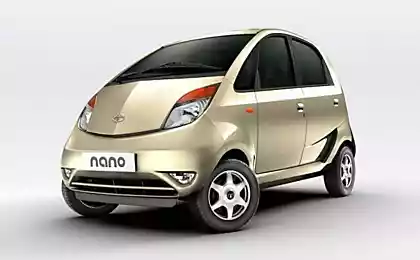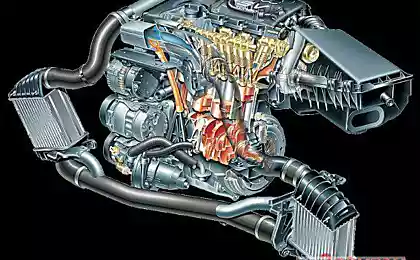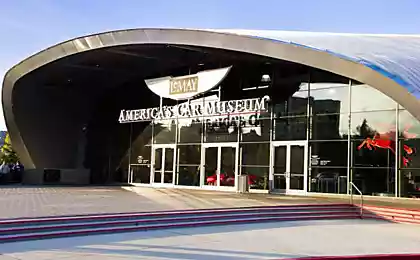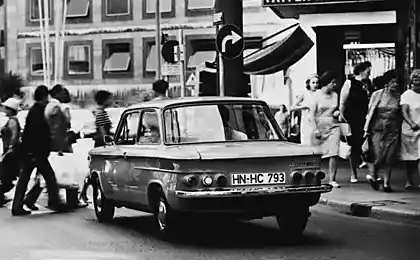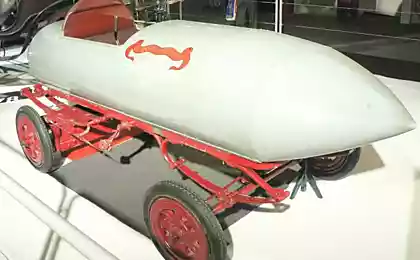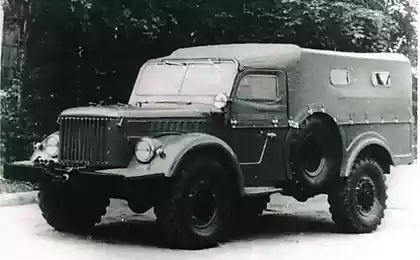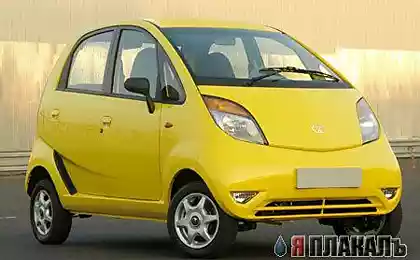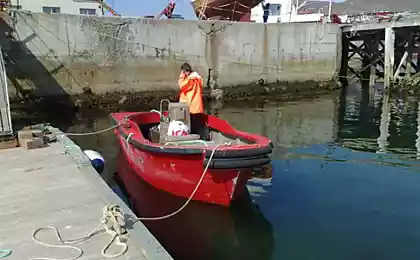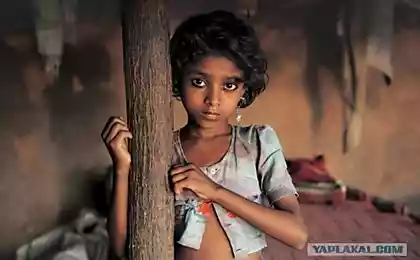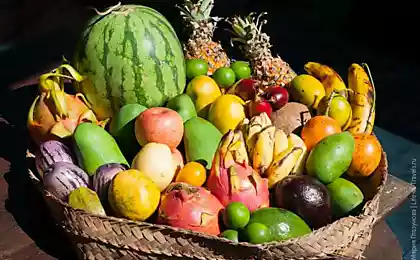567
Tata OneCAT: car on compressed air from India
World famous for the production of cheap vehicles of the Indian company Tata launched the world's first production car with an engine that runs on compressed air.
Tata OneCAT weighs 350 kg and can pass on the same supply of compressed to 300 atmospheres, the air is 130 km, while accelerating to 100 km per hour.
According to the developers, to go on such indicators is possible only with completely full tanks, the density of air which will reduce the maximum speed.
For the filling located under the vehicle four carbon cylinders of length 2 and diameter of a quarter meter of every need 400 liters of compressed air at a pressure of 300 bar. And to fill Tata OneCAT on the compressor station (it takes 3-4 minutes), and from a household socket. In the latter case, "paging" using the built-in car mini compressor will last for three to four hours.
By the way, carbon-fiber cylinders if damaged do not explode, but only a crack, letting out the air.
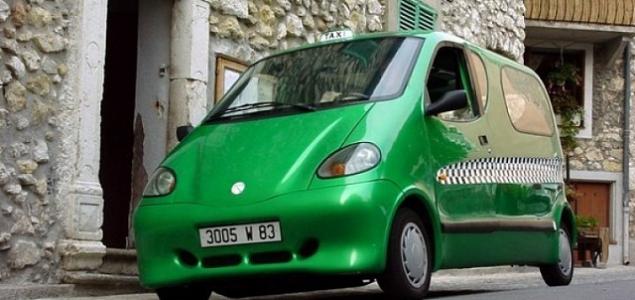
Unlike electric cars, with batteries which have problems of utilization and the low efficiency of the charge-Razsadnika cycle (from 50% to 70% depending on the level of currents charge and discharge), the machine compressed air is also economically profitable and environmental.
"Air fuel" is relatively cheap, if you translate it into a gasoline equivalent, it turns out that the car consumes about a liter per 100 km.
In pneumomail usually no drivetrain, as the engine produces maximum torque even at standstill. In addition, the air motor hardly needs prevention: normative mileage between two inspections is 100 thousand km, and oils — 50 thousand kilometers is enough for a liter of oil (for a conventional car would need about 30 litres of oil).
Tata OneCAT has a four-cylinder engine with a volume of 700 cubes and weighing just 35 kg. It works on the principle of mixing compressed air with the outside, ambient air. This power unit like a normal internal combustion engine, but the cylinders had different diameters — two young, driven, and two large, working. During engine operation ambient air is drawn into the small cylinder piston is compressed there and is heated and then pushed into the two working cylinder, where it mixes with the cold compressed air from the tank. As a result of air in the mixture expands and drives the working pistons which in turn run the engine crankshaft.
Since there is no combustion in this engine does not occur, the output is only the waste of clean air.
Calculating the total energy efficiency in the chain "refinery — car" for the three types of drive — petrol, electric and air, developers have discovered that the efficiency of the air actuator is 20%, which is more than two times the efficiency of standard petrol engine and in half — an efficiency drive. Besides, the compressed air can be accumulated for future use using unstable renewable energy sources, like wind turbines — then we can get even better efficiency.
According to the developers, by lowering the temperature to — 20C the energy of the actuator is reduced by 10% without any other harmful effects, while the energy electric battery is reduced by about 2 times.
In addition, worked in the motor air has a low temperature and can be used for cooling the car interior on hot days. The owner of the Tata OneCAT will have to spend energy just for heating the car in cold season.

Car Tata OneCAT, which is simple in design, was developed primarily for use in a taxi. published
P. S. And remember, only by changing their consumption — together we change the world! ©
Join us in Facebook , Vkontakte, Odnoklassniki
Source: ecotown.com.ua/news/Indiyska-kompaniya-vypustyla-avtomobil-na-stysnenomu-povitri/
Tata OneCAT weighs 350 kg and can pass on the same supply of compressed to 300 atmospheres, the air is 130 km, while accelerating to 100 km per hour.
According to the developers, to go on such indicators is possible only with completely full tanks, the density of air which will reduce the maximum speed.
For the filling located under the vehicle four carbon cylinders of length 2 and diameter of a quarter meter of every need 400 liters of compressed air at a pressure of 300 bar. And to fill Tata OneCAT on the compressor station (it takes 3-4 minutes), and from a household socket. In the latter case, "paging" using the built-in car mini compressor will last for three to four hours.
By the way, carbon-fiber cylinders if damaged do not explode, but only a crack, letting out the air.

Unlike electric cars, with batteries which have problems of utilization and the low efficiency of the charge-Razsadnika cycle (from 50% to 70% depending on the level of currents charge and discharge), the machine compressed air is also economically profitable and environmental.
"Air fuel" is relatively cheap, if you translate it into a gasoline equivalent, it turns out that the car consumes about a liter per 100 km.
In pneumomail usually no drivetrain, as the engine produces maximum torque even at standstill. In addition, the air motor hardly needs prevention: normative mileage between two inspections is 100 thousand km, and oils — 50 thousand kilometers is enough for a liter of oil (for a conventional car would need about 30 litres of oil).
Tata OneCAT has a four-cylinder engine with a volume of 700 cubes and weighing just 35 kg. It works on the principle of mixing compressed air with the outside, ambient air. This power unit like a normal internal combustion engine, but the cylinders had different diameters — two young, driven, and two large, working. During engine operation ambient air is drawn into the small cylinder piston is compressed there and is heated and then pushed into the two working cylinder, where it mixes with the cold compressed air from the tank. As a result of air in the mixture expands and drives the working pistons which in turn run the engine crankshaft.
Since there is no combustion in this engine does not occur, the output is only the waste of clean air.
Calculating the total energy efficiency in the chain "refinery — car" for the three types of drive — petrol, electric and air, developers have discovered that the efficiency of the air actuator is 20%, which is more than two times the efficiency of standard petrol engine and in half — an efficiency drive. Besides, the compressed air can be accumulated for future use using unstable renewable energy sources, like wind turbines — then we can get even better efficiency.
According to the developers, by lowering the temperature to — 20C the energy of the actuator is reduced by 10% without any other harmful effects, while the energy electric battery is reduced by about 2 times.
In addition, worked in the motor air has a low temperature and can be used for cooling the car interior on hot days. The owner of the Tata OneCAT will have to spend energy just for heating the car in cold season.

Car Tata OneCAT, which is simple in design, was developed primarily for use in a taxi. published
P. S. And remember, only by changing their consumption — together we change the world! ©
Join us in Facebook , Vkontakte, Odnoklassniki
Source: ecotown.com.ua/news/Indiyska-kompaniya-vypustyla-avtomobil-na-stysnenomu-povitri/
